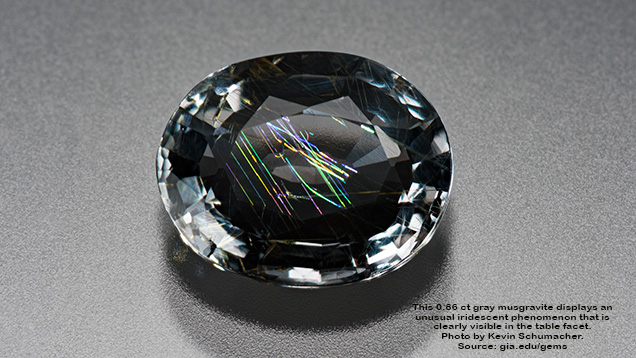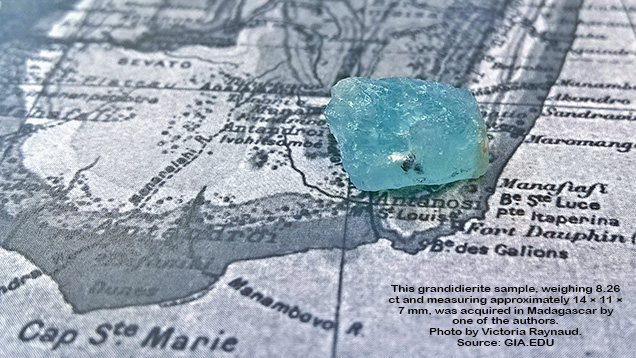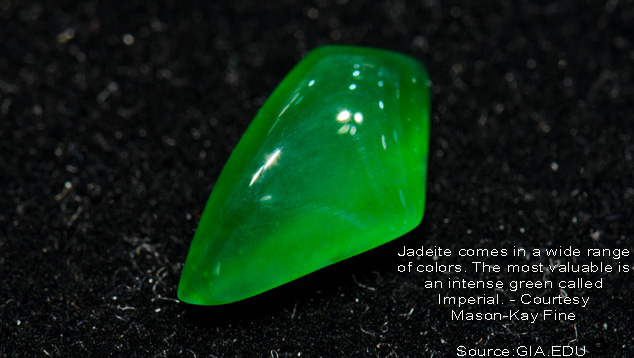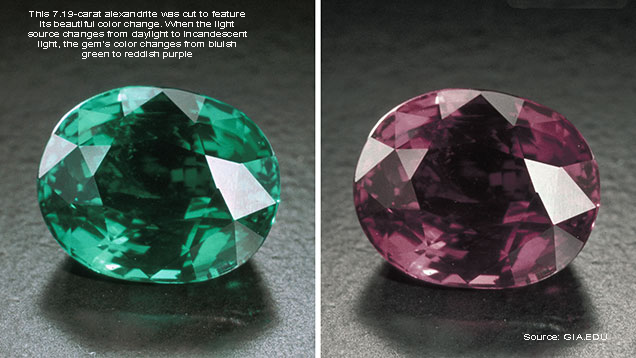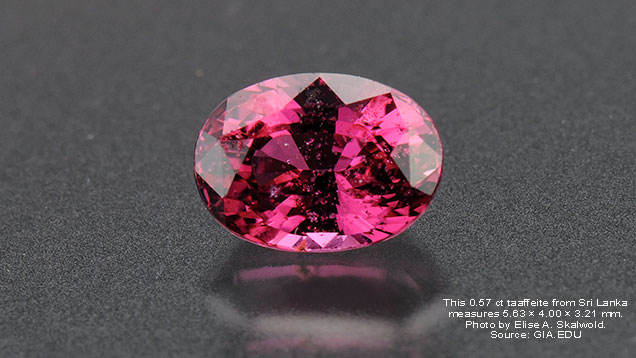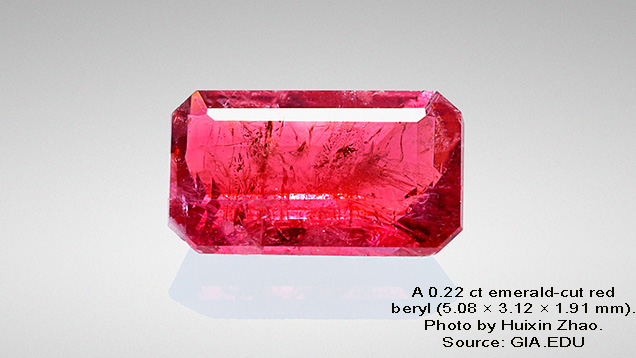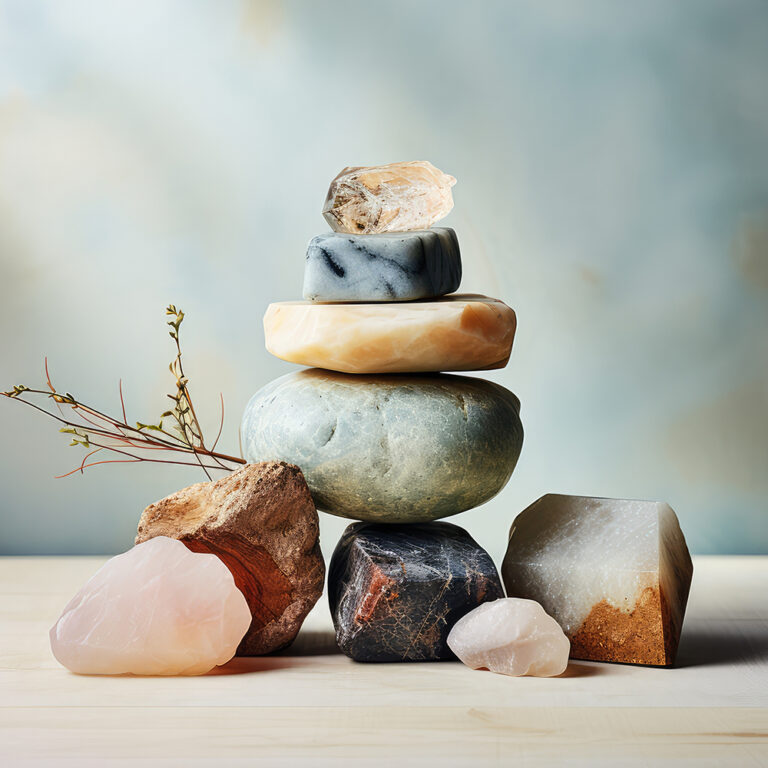10 rarest Gemstones in the world
Gemstones have long been a symbol of beauty and rarity. While many are familiar with classic gemstones such as diamonds, rubies, and emeralds, a handful are exceedingly rare and coveted. Here, we explore the ten rarest gemstones in the world.
Musgravite – the rarest gemstones
This grayish-green gem is rarer than diamonds and is found only in Australia. Its scarcity, combined with its stunning colour, makes it highly sought after among gem collectors. “Musgravite is a rare mineral closely related by composition to the mineral taaffeite. This magnesium-rich beryllium oxide crystallizes in the trigonal system, in contrast to the hexagonal system of taaffeite, and is highly sought after by rare stone collectors. A 0.86 ct musgravite, identified by Raman spectroscopy, contained a particularly interesting inclusion scene consisting of numerous etch tubes that broke the surface of the faceted stone (figure 1). With a direct source of light, these etch tubes displayed vibrant colors resulting from thin-film iridescence in the air-filled, crystallographically aligned tubes (figure 2). This is the first musgravite gemstone displaying any type of optical phenomenon that this author has examined to date.” (source: https://www.gia.edu/gems-gemology/summer-2015-microworld-iridescent-musgravite).
Serendibite
Serendibite is an exceedingly rare and precious gemstone known for its stunning deep blue to bluish-black coloration. This gem is highly regarded for its remarkable beauty and scarcity. It was first discovered in Sri Lanka (formerly known as Ceylon), and its name “Serendibite” is derived from the old Arabic name for the island, “Serendib.”
Serendiite is often used in high-end jewellery and is prized for its captivating colour and exceptional brilliance. Its rarity makes it a sought-after collector’s gemstone, and it is typically found in smaller sizes, which adds to its exclusivity and desirability among gem enthusiasts and connoisseurs.
Grandidierite
Grandidierite: Known for its blue-green hue, this rarest gemstone is found mainly in Madagascar. It is highly prized for its intense colour and exceptional brilliance.
“Grandidierite was first described in southern Madagascar in 1902. The mineral is very rare; gem-quality material of facetable size was almost unheard of in the market before the summer of 2015. In September 2015, GIA’s Bangkok lab issued identification reports for several faceted grandidierite samples, which reached the consumer market the following month. The submitted stones ranged from 0.9 to 2.3 ct. Around the same time, one of the authors (VP) returned from a field expedition to Madagascar, where he had received some unidentified stones from Jack Mampihao.”- Read more here https://www.gia.edu/gems-gemology/winter-2015-gemnews-grandidierite-madagascar
Jadeite
Jadeite is known to many, a high-quality specimen with impeccable translucency and intense green colour and is known as one of the rarest gemstones worldwide, they are primarily sourced from Myanmar.
“To understand the value of jade, you have to look beyond its durability and its role as a gemstone and beautiful adornment. Jade is a spiritual stone with significant meaning that’s intricately woven into the Chinese culture.
The price for fine-quality jadeite has risen dramatically along with China’s economic rise. The demand from those who can newly afford it has significantly outpaced the supply of this rare material.
The Chinese have revered jadeite’s fine green color since its discovery in Burma. Top-quality jadeite is rare. Vivid, sleek, and translucent, magnificent jadeite commands some of the highest prices among gems in today’s international market.
Jadeite’s three most important qualities, in order of their impact on its market value, are color, transparency, and texture.
When jadeite buyers evaluate fashioned jadeite, they consider many factors. First, they judge its color under both fluorescent and incandescent light sources. They check its level of transparency. They look for even coloration or a pleasing mottling of colors. They also look for fine polish and undistorted surface reflections. Clarity is important, too, because any fractures can strongly affect value.
Color
Color is jadeite’s most important value factor. Because consumers traditionally associate jadeite with the color green, it surprises some people to learn that it comes in other colors as well—lavender, red, orange, yellow, brown, white, black, and gray. All of these colors can be attractive. But jadeite’s most desirable color is, in fact, a very specific shade of green.
The finest-quality jadeite—almost transparent with a vibrant emerald-green color—is known as “Imperial jade.” The royal court of China once had a standing order for all available material of this kind, and it’s one of the world’s most expensive gems.
The green that can command millions of dollars in the marketplace is pure and penetrating, a vivid hue with no hint of gray that looks intense even from a distance. It ranges from pure green to a slightly bluish green or a slightly yellowish green.” Source: https://www.gia.edu/jade-quality-factor
Alexandrite
This color-changing gemstone is a spectacular rarity. It displays different colors under different lighting conditions and is found mainly in Sri Lanka and Russia. “Often described by gem aficionados as “emerald by day, ruby by night,” alexandrite is the very rare color-change variety of the mineral chrysoberyl. Originally discovered in Russia’s Ural Mountains in the 1830s, it’s now found in Sri Lanka, East Africa, and Brazil, but fine material is exceptionally rare and valuable (…) Alexandrite is also a strongly pleochroic gem, which means it can show different colors when viewed from different directions. Typically, its three pleochroic colors are green, orange, and purple-red. However, the striking color change doesn’t arise from the gem’s pleochroism, but rather from the mineral’s unusual light-absorbing properties.
Because of its scarcity, especially in larger sizes, alexandrite is a relatively expensive member of the chrysoberyl family. It shares its status as a June birthstone with cultured pearl and moonstone.” Source: https://www.gia.edu/alexandrite-description
Painite
Painite is one of the rarest gemstones in the world. It was first discovered in Myanmar (formerly known as Burma) by British mineralogist Arthur C.D. Pain in the early 1950s, which is how it got its name. Painite is known for its brown to reddish-brown or blackish-brown color and exceptional rarity.
For many years, Painite held the title of the world’s rarest mineral, with only a handful of known specimens in existence. However, more discoveries have been made in recent years, expanding the known quantity of Painite specimens. Despite this, it remains highly valuable due to its extreme scarcity.
Painite is often used as a collector’s gemstone, and its scarcity and unique appearance make it highly sought after in the world of mineral and gemstone enthusiasts. Its composition includes borate, aluminum, and other elements, contributing to its distinct properties.
Taaffeite
Taaffeite is an exceptionally rare and valuable gemstone known for its scarcity and captivating beauty. It is typically found in various shades of lavender, mauve, and pink, making it highly prized among collectors and connoisseurs of fine gemstones.
Named after its discoverer, gemologist Richard Taaffe, Taaffeite was first identified in Myanmar (formerly Burma) in the late 1940s. This gemstone is incredibly rare, with only a limited number of verified specimens in existence. It belongs to the beryllium mineral family, which includes gems like emerald and aquamarine.
Taaffeite’s rarity and exquisite coloration make it one of the most sought-after and valuable gemstones globally. Its unique properties, coupled with its limited availability, contribute to its high market value and desirability among those who appreciate fine gemstones.
Red Beryl
Red beryl, also known as “bixbite” or “scarlet emerald,” is a rare and strikingly beautiful gemstone celebrated for its intense red to pinkish-red color. It belongs to the beryl mineral family, which includes well-known gemstones like emerald and aquamarine.
The distinctive red hue of red beryl is caused by the presence of manganese ions within the crystal structure. This gemstone is exceptionally rare, and high-quality red beryl specimens are even scarcer than fine diamonds. Most red beryl is found in the Wah Wah Mountains of Utah, USA, although other sources exist in countries like Brazil and Myanmar.
Due to its extreme rarity and stunning color, red beryl is highly sought after by collectors and gem enthusiasts. It is often used in high-end jewelry, and its value can rival or even exceed that of diamonds on a per-carat basis, depending on the quality and size of the stone. Red beryl is a true gemstone rarity, prized for its breathtaking beauty and scarcity in the world of gemstones.
Benitoite
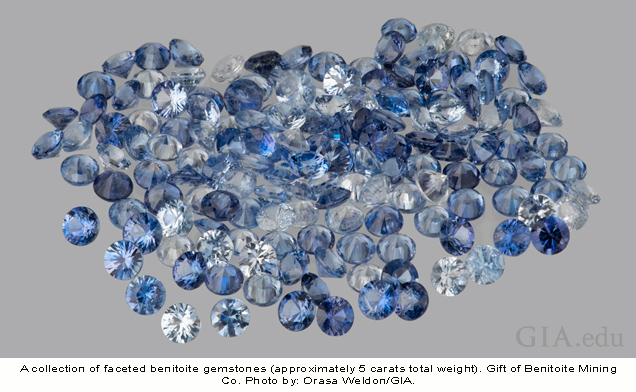
Benitoite belongs to the group of the rarest gemstones known for its striking sapphire-blue color and unique crystal structure. It is the official state gem of California, where it was first discovered. Benitoite was named after the San Benito River in California, near the location of its initial finding.
This gemstone’s mesmerizing blue color is attributed to the presence of traces of titanium and iron within its crystal lattice. Benitoite crystals often form in a unique and distinctive hexagonal shape. While blue is the most well-known color, some Benitoite crystals can exhibit shades of color ranging from colorless to grayish-blue.
Benitoite is highly sought after by collectors and gem enthusiasts due to its rarity and aesthetic appeal. It is typically faceted into gemstones for use in jewelry, but its scarcity makes it a prized possession among collectors. Despite its beautiful appearance, Benitoite remains relatively unknown to the general public, primarily because of its limited sources and the difficulty in obtaining larger gem-quality crystals.
Black Opal
Black opal is one of the rarest gemstones known for its mesmerizing play of colors. It is hailed as one of the most valuable and sought-after varieties of opal, considered a true treasure in the world of gemology. The allure of black opal lies in its intense and vivid color flashes that dance across its dark background, creating an ethereal and magical effect.
Unlike other opals, black opal exhibits a unique and distinct body color that ranges from dark gray to jet black. This dark backdrop serves as the perfect canvas for the vibrant play of colors, which can include shades of blue, green, purple, and orange, among others. The enchanting play of colors is a result of light diffracting through microscopic silica spheres within the gemstone, creating a spectacular and ever-changing display.
The rarity of black opal is due to its limited occurrence, primarily found in the Lightning Ridge region of New South Wales, Australia. This remote location is renowned for producing some of the finest black opals in the world, with their exceptional quality and intensity of colors. The scarcity and unique beauty of black opal contribute to its high value, making it a prized possession among collectors and jewelry enthusiasts.
Black opal has captivated civilizations throughout history, with ancient civilizations attributing mystical powers and symbolic meanings to the gemstone. Today, it continues to captivate and inspire designers and artisans who incorporate black opal into exquisite jewelry pieces, accentuating its natural beauty and iridescent charm.
Black opal is a rare and enchanting gemstone characterized by its dark body color and vibrant play of colors. With its mesmerizing beauty and scarcity, black opal has established itself as a highly prized and coveted gemstone, cherished for its uniqueness and captivating qualities.
These ten rare gemstones possess an allure that goes beyond their beauty. Their scarcity creates a sense of exclusivity and makes them truly exceptional and highly sought after by gem connoisseurs worldwide.


